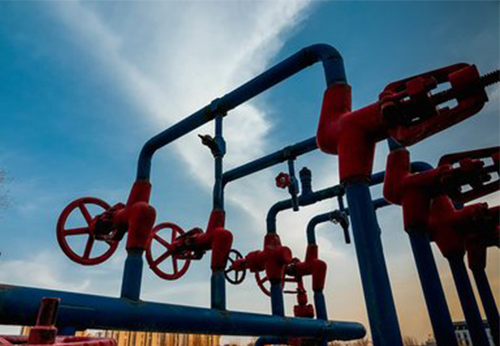Key points of valve selection in chemical engineering design
Posted by Bundor valve
Generally speaking, one of the tasks of chemical pipeline design is the reasonable selection of valves.Reasonable valve selection can guarantee the benefit of subsequent production and operation.The following aspects are generally considered for the selection of valves:

1.The nature of the conveying fluid
The valve is used to control the fluid, and the fluid is various, such as gas, liquid, steam, viscous liquid, suspension, slurry, etc. Some fluids also contain dust, solid suspended particles, etc.Therefore, when selecting valves, it is necessary to understand the nature of the fluid first. When a variety of materials are mixed together, their properties are different. When selecting valves, it is necessary to comprehensively consider the nature of the materials.
2.The function of valve
The function of the valve shall also be considered when selecting the valve. Is this valve used to adjust the pressure, flow or cut off?If it is only necessary to cut off, it is also necessary to consider whether there is a requirement for quick opening and closing;Is it one-way flow or two-way flow? Some valves are not tightly closed and have leakage, so it is necessary to consider whether there is a strict sealing requirement in the use occasions.Each type of valve has its own characteristics and application occasions, and appropriate valves shall be selected according to functional requirements.
3.The size of valve
In chemical engineering design, the valve size is generally determined according to the size of the process pipe.
4.The operating temperature and pressure of valve
The application of each valve is different, and different valves are selected under different pressures and temperatures.Generally, the material and pressure grade of the valve shall be determined according to the worst process conditions (maximum working pressure and maximum working temperature) to select the most appropriate valve under this condition.
5.The material of valve
When the temperature, pressure rating and fluid characteristics of the valve are determined, appropriate materials shall be selected.In most cases, the valve body, valve seat and valve disc are made of several different materials, not one material.For pipelines conveying corrosive materials, valves made of stainless steel, plastic, monel alloy and other materials are generally selected according to the nature of the materials, and valves made of anti-corrosion materials such as steel lined PTFE and other materials can also be used.

1.The nature of the conveying fluid
The valve is used to control the fluid, and the fluid is various, such as gas, liquid, steam, viscous liquid, suspension, slurry, etc. Some fluids also contain dust, solid suspended particles, etc.Therefore, when selecting valves, it is necessary to understand the nature of the fluid first. When a variety of materials are mixed together, their properties are different. When selecting valves, it is necessary to comprehensively consider the nature of the materials.
2.The function of valve
The function of the valve shall also be considered when selecting the valve. Is this valve used to adjust the pressure, flow or cut off?If it is only necessary to cut off, it is also necessary to consider whether there is a requirement for quick opening and closing;Is it one-way flow or two-way flow? Some valves are not tightly closed and have leakage, so it is necessary to consider whether there is a strict sealing requirement in the use occasions.Each type of valve has its own characteristics and application occasions, and appropriate valves shall be selected according to functional requirements.
3.The size of valve
In chemical engineering design, the valve size is generally determined according to the size of the process pipe.
4.The operating temperature and pressure of valve
The application of each valve is different, and different valves are selected under different pressures and temperatures.Generally, the material and pressure grade of the valve shall be determined according to the worst process conditions (maximum working pressure and maximum working temperature) to select the most appropriate valve under this condition.
5.The material of valve
When the temperature, pressure rating and fluid characteristics of the valve are determined, appropriate materials shall be selected.In most cases, the valve body, valve seat and valve disc are made of several different materials, not one material.For pipelines conveying corrosive materials, valves made of stainless steel, plastic, monel alloy and other materials are generally selected according to the nature of the materials, and valves made of anti-corrosion materials such as steel lined PTFE and other materials can also be used.
 简体中文
简体中文 Русский
Русский Español
Español Bundor - Butterfly, Gate, Check, Ball, Globe Valve Manufacturer, Supplier & Distributor
Bundor - Butterfly, Gate, Check, Ball, Globe Valve Manufacturer, Supplier & Distributor
